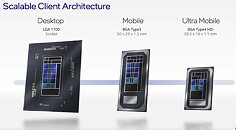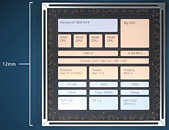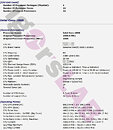China Doubles Down on Semiconductor Research, Outpacing US with High-Impact Papers
When the US imposed sanctions on Chinese semiconductor makers, China began the push for sovereign chipmaking tools. According to a study conducted by the Emerging Technology Observatory (ETO), Chinese institutions have dramatically outpaced their US counterparts in next-generation chipmaking research. Between 2018 and 2023, nearly 475,000 scholarly articles on chip design and fabrication were published worldwide. Chinese research groups contributed 34% of the output—compared to just 15% from the United States and 18% from Europe. The study further emphasizes the quality of China's contributions. Focusing on the top 10% of the most-cited articles, Chinese researchers were responsible for 50% of this high-impact work, while American and European research accounted for only 22% and 17%, respectively.
This trend shows China's lead isn't about numbers only, and suggests that its work is resonating strongly within the global academic community. Key research areas include neuromorphic, optoelectric computing, and, of course, lithography tools. China is operating mainly outside the scope of US export restrictions that have, since 2022, shrunk access to advanced chipmaking equipment—precisely, tools necessary for fabricating chips below the 14 nm process node. Although US sanctions were intended to limit China's access to cutting-edge manufacturing technology, the massive body of Chinese research suggests that these measures might eventually prove less effective, with Chinese institutions continuing to push forward with influential, high-citation studies. However, Chinese theoretical work is yet to be proven in the field, as only a single company currently manufactures 7 nm and 5 nm nodes—SMIC. Chinese semiconductor makers still need more advanced lithography solutions to reach high-volume manufacturing on more advanced nodes like 3 nm and 2 nm to create more powerful domestic chips for AI and HPC.
This trend shows China's lead isn't about numbers only, and suggests that its work is resonating strongly within the global academic community. Key research areas include neuromorphic, optoelectric computing, and, of course, lithography tools. China is operating mainly outside the scope of US export restrictions that have, since 2022, shrunk access to advanced chipmaking equipment—precisely, tools necessary for fabricating chips below the 14 nm process node. Although US sanctions were intended to limit China's access to cutting-edge manufacturing technology, the massive body of Chinese research suggests that these measures might eventually prove less effective, with Chinese institutions continuing to push forward with influential, high-citation studies. However, Chinese theoretical work is yet to be proven in the field, as only a single company currently manufactures 7 nm and 5 nm nodes—SMIC. Chinese semiconductor makers still need more advanced lithography solutions to reach high-volume manufacturing on more advanced nodes like 3 nm and 2 nm to create more powerful domestic chips for AI and HPC.













































